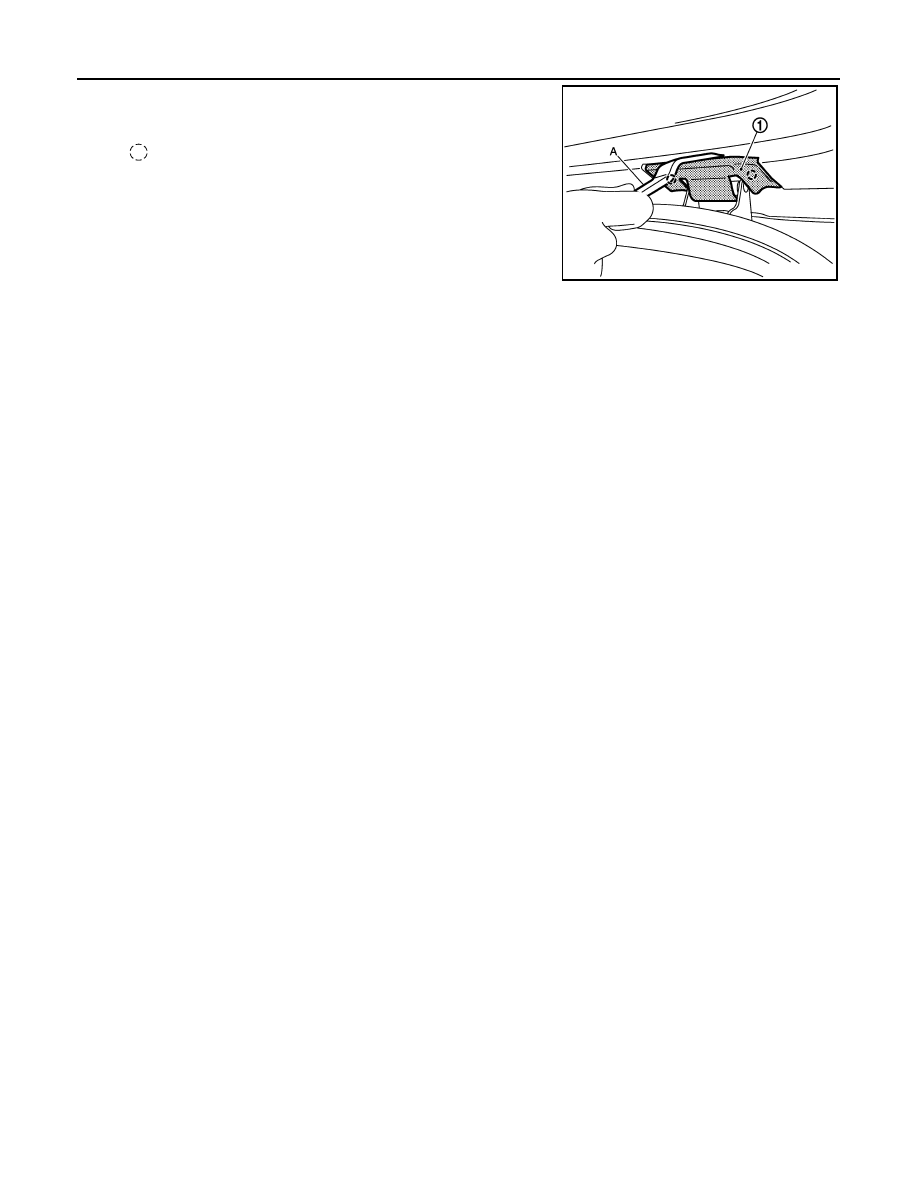Nissan Murano Z51 (2008 year). Manual - part 246

INT-40
< ON-VEHICLE REPAIR >
BACK DOOR TRIM
10. Disengage back door hinge cover (1) fixing clips with remover
tool (A) and then remove back door hinge cover(LH/RH).
INSTALLATION
Install in the reverse order of removal.
CAUTION:
When installing back door trim, check that clips are securely fitted in panel holes on body, and then
press them in.
: Clip
JMJIA1692ZZ
Revision: 2008 October
2009 Murano